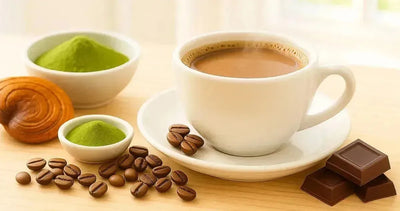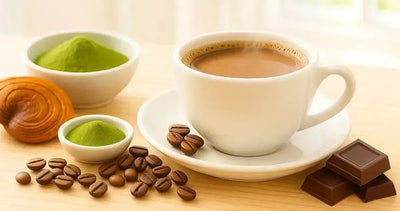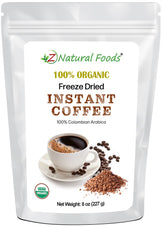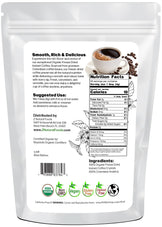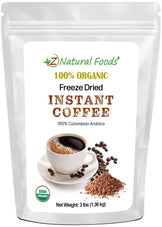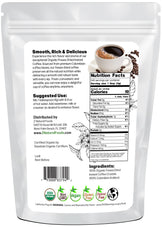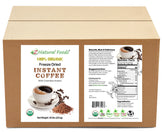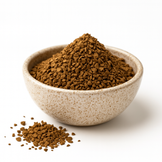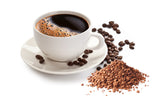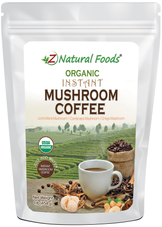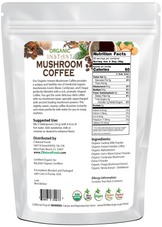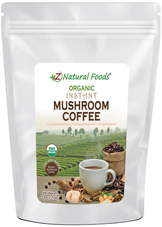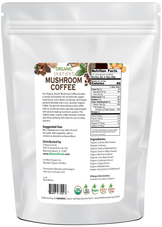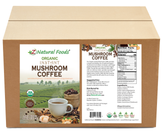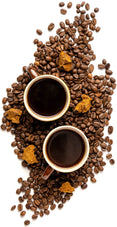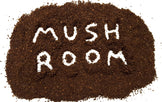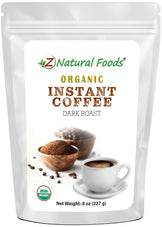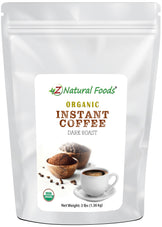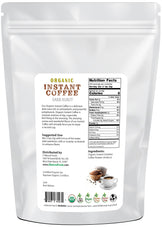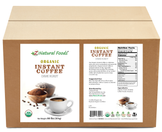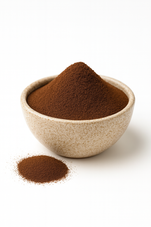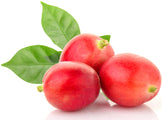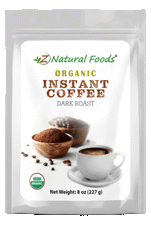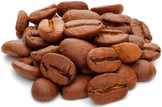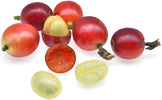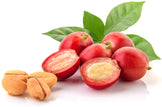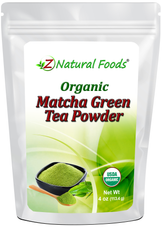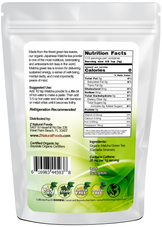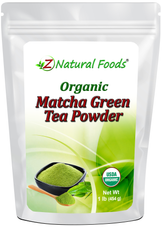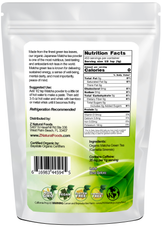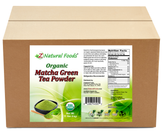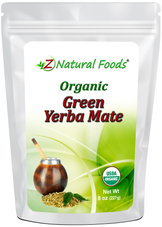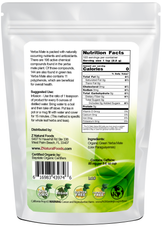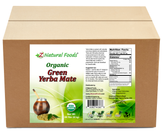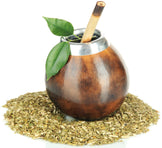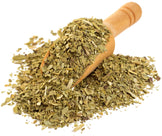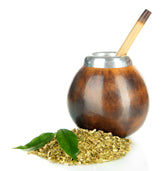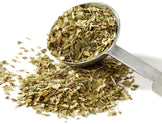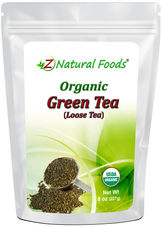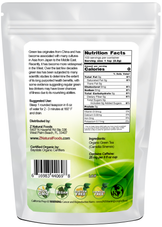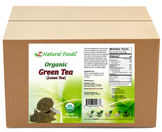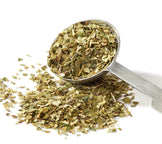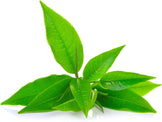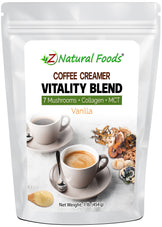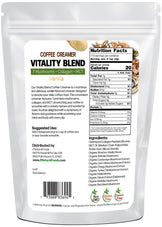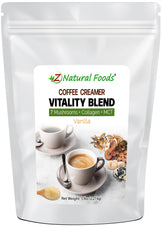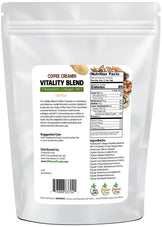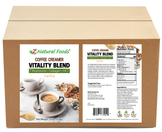Description
Description
Part One: The nourishing benefits of coffee
We all love a fresh, hot cup of java in the morning or as an afternoon pick-me-up.
Outstanding research shows that drinking coffee (between 1 and 4 cups daily) in its most natural form provides a wide array of compounds with nourishing and therapeutic benefits.
So, today, we present part one of two of our Java Talk series, which explains the importance of your daily cup(s) of coffee.
Whether you realize it or not, one of the benefits of drinking coffee is obtaining a nourishing amount of all its potent polyphenolic compounds. According to the Phenol-Explorer database,
Coffee was ranked #11 in the top 100 best antioxidant foods.
One cup of regular coffee provides 400-600 milligrams (12 ounces of decaf provides 400 milligrams) of these potent compounds, making reaching your daily 2000 milligrams polyphenol goals we have spoken about in past articles a lot easier.
While rich in many nourishing compounds, caffeine, and chlorogenic acid are two of coffee's primary components.
Chlorogenic acid is a potent biologically active compound with antioxidant capabilities and converts into aroma compounds that contribute to the color and flavor profile of the coffee bean. The average cup of conventional coffee provides only around 92 milligrams of chlorogenic acid.
However, the process of soaking and draining the beans before roasting helps retain the polyphenolic compounds. A cup of coffee that has undergone this process provides around 172 milligrams of chlorogenic acid. It is important to note that the roasting process affects the overall chlorogenic acid and caffeine content. On average, Dark roast has the lowest caffeine and chlorogenic acid content.
There is exciting emerging research showing that the flavonoids found in coffee are more potent than we initially thought based on their various mechanisms of action.
The following is stated in a review titled Flavonoids: antioxidants or signaling molecules:
- While the primary focus has been on antioxidant properties, there is an emerging view that flavonoids and their in vivo metabolites do not act as conventional hydrogen-donating antioxidants but may exert modulatory actions in cells through actions at protein kinase and lipid kinase signaling pathways.
- Inhibitory or stimulatory actions at these pathways are likely to profoundly affect cellular function by altering the phosphorylation state of target molecules and modulating gene expression.
- A clear understanding of flavonoids' mechanisms of action, either as antioxidants or modulators of cell signaling, and the influence of their metabolism on these properties is critical to evaluating these potent biomolecules as cardioprotectants and inhibitors of neurodegeneration.”
In a study discussing the effects of coffee consumption on subclinical inflammation and other risk factors for type 2 diabetes, the following was stated.
- Coffee consumption increased coffee-derived compounds, mainly serum caffeine, chlorogenic acid, and caffeic acid metabolites.
- Significant changes were also observed for serum concentrations of interleukin-18, 8-isoprostane, and adiponectin (medians: -8 %, -16 %, and 6%, respectively; consumption of 8 cups compared with 0 cups coffee/d).
- Serum concentrations of total cholesterol, HDL cholesterol, and apolipoprotein A-I increased significantly by 12%, 7%, and 4%, respectively, whereas the ratios of LDL to HDL cholesterol and of apolipoprotein B to apolipoprotein A-I decreased significantly by 8% and 9%, respectively (8 cups coffee/d compared with 0 cups).
Therefore, the following was concluded. “Coffee consumption appears to have beneficial effects on subclinical inflammation and HDL cholesterol, whereas no changes in glucose metabolism were found in our study. Furthermore, many coffee-derived methylxanthines and caffeic acid metabolites appear as coffee intake biomarkers.”
Caffeine: The King of Stimulants
Caffeine is classified as a stimulant that is used explicitly for various reasons. It increases the activity of the central nervous system, which increases alertness, attention, energy, and physical activity. Caffeine levels can vary depending on the coffee bean type. For instance, Robusta beans have a higher level of caffeine than Arabica beans.
The mechanisms of action for caffeine are mediated in four different ways:
- Antagonism of adenosine receptors
- Inhibition of phosphodiesterase
- The release of calcium from intracellular stores
- Antagonism of benzodiazepin receptors
In a comparative study looking at the risk of mortality from cardiovascular disease in those who drink coffee, green, and oolong tea versus those who don’t, it was found that the “risk reduction for total CVD across categories of caffeine intake was most prominently observed in the second highest quintile, with a 38% lower risk among men and 22% among women.”
It was concluded that consuming coffee, green tea, oolong tea, and total caffeine intake was associated with a reduced CVD mortality risk.
Decaf: The Middle Step Child of the Coffee Family
Decaf coffee has undoubtedly yet to be given the respect it deserves, as it has always been pushed aside and never given a second thought. We have been taught to believe that it is a waste of time to consume.
However, decaf coffee could be one of the most underrated beverages. Here are some interesting facts about decaf coffee that many people don’t know. There are various processes used to remove caffeine from coffee beans. The most well-known and considered the best is the Swiss water process.
The process uses carbon dioxide or a carbon filter to remove the caffeine. Because the various methods of removing caffeine only capture 97% of it, decaf coffee averages 2 to 4 milligrams per cup. Therefore, decaf coffee does not mean caffeine-free.
But do you still get the same nourishing benefits? It is vital to note that while some studies don’t specify whether caffeine or decaf was used, a survey of coffee studies found that many of the same nourishing benefits are derived from both beverages. As stated earlier in this article, 12 ounces of decaff provides an average of 400 milligrams of polyphenolic compounds. That is some powerful polyphenolic power.
Arabica vs Robusta: What’s the difference?
For many years, there has been a debate about which species of coffee beans are superior in terms of antioxidant and flavor profile. While it has always been believed that robusta beans are of lower quality, that is simply untrue. Over the years, we have learned that each species' growth and processing determine its flavor profiles. Here are some facts about these two species of coffee beans.
- Arabica beans have a smoother and sweeter taste and are known for their chocolate flavor notes and fruity undertones. It provides a balanced flavor profile. In contrast, robustas' flavor profile is described as deep and bold with nutty undertones.
- These differences in flavor profiles are often due to how the beans are processed. Robusta is naturally processed, and arabica is washed. Arabica is indeed more costly because it requires specific growing conditions (above 3000 feet and only subtropical climates) and is more labor intensive.
- Robusta is hardy and highly resistant to weather, pests, and disease. In contrast, arabica is more delicate and less resistant to those external factors.
- The difference in flavor profile is also caused by robusta beans having 60% less naturally occurring sugar and fatty acids, which creates its deep and bold flavor.
- Robusta has almost twice the amount of caffeine as arabica.
- While there can be some variation, the average amount of chlorogenic acid found in robusta beans is 7-14% compared to the 4-8% found in arabica beans.
In the end, neither is better than the other. Each species has unique characteristics that create an exceptional cup of coffee.
The Coffee Berry
Finally, we can’t brag about the nourishing qualities of coffee if we don’t speak about the unsung hero of coffee, the berry that coffee grows inside.
That is correct; I said berry because the coffee bean is the seed of the cherry fruit, which is considered one of Earth's most antioxidant-rich foods. While traditionally discarded as waste, this powerful berry has recently taken its place on a very impressive list of polyphenolic-rich foods holding its own for its nourishing benefits.
Growing up, my grandfather ate half a grapefruit as a part of his breakfast. He left the bitter white flesh connected to the pulp when he prepared it. Most people didn’t eat the white flesh because it was very bitter, but he knew that was where the real nourishment came from. One man's waste is another man's gold.
The following was stated In a randomized trial comparing the effects of whole coffee fruit (WCFC), green coffee (N677), and grapeseed extract (N31) on the Modulatory impact on brain-derived neurotrophic factor plasma levels in healthy subjects. “
Treatments with N31 and N677 increased levels of plasma BDNF by about 31% under these experimental conditions, whereas treatment with WCFC increased it by 143% (n 10), compared with baseline.” Therefore, it was concluded that “WCFC could be used for modulation of BDNF-dependent health conditions.”
The following was stated in another randomized control study looking at coffee cherry extract's short- and long-term effects in older adults with mild cognitive decline.
- The impact of CCE was notable during the first week and persisted throughout the study.
- Specifically, participants on the CCE regimens had significant reductions in reaction time compared to placebo when comparing baseline to days 7 and 28 (p = 0.040, partial η2 = 0.130).
- A main effect of the group was not identified for accuracy; however, strong trends were noted between the placebo group and two of the three CCE groups.
- These results suggest CCE, when taken in the morning or twice per day, is associated with improvements in reaction times and trends toward indications of improved accuracy.
It should be noted that while significantly less than your average cup of coffee, the berry does contain between 5 and 20 milligrams of caffeine per serving. This number depends on the final product's process, and full-spectrum extracts showed up to 25 times higher antioxidant activity.
Also, the amount used in supplement form averages 400 milligrams per dose and has been shown to be safely used up to 800 milligrams daily.
Is the whole coffee bean edible?
Did you know the tradition in many countries of eating whole coffee beans as a snack is beginning to pop up in the United States? This snack provides a convenient and more concentrated form of the powerful polyphenols in your coffee cup.
Before the infamous high-fat coffee drink emerged, mixing whole beans with animal fats and consuming them was common to increase energy levels. Be warned that only a tiny amount is needed, and because of coffee beans' concentration levels, you are not advised to overindulge.
If you experience adverse effects from drinking coffee, those effects may be more potent from eating whole coffee beans.
While it is well known that the majority of caffeine is extracted during the brewing process, how much caffeine you get from eating the whole bean is still up in the air.
However, it is essential to remind you that you should never exceed 400 milligrams of caffeine daily. For some perspective, around 15 to 20 chocolate-covered coffee beans are equivalent to 200 milligrams of caffeine.
Remember that when you consume the chocolate-covered version, you should also account for the increased sugar and calorie intake. Here is one final note about this topic.
If you want to get off caffeine consumption slowly, using whole coffee beans may be a very effective titration method because each bean contains 8 to 10 milligrams of caffeine. This allows for greater titration control.
Please stay tuned for part 2 of this article, where we will discuss our top suggestions for making your average cup of coffee extraordinary. Until then, Nanu, Nanu
For more information about all of our Organic Teas and Coffees, go here:

